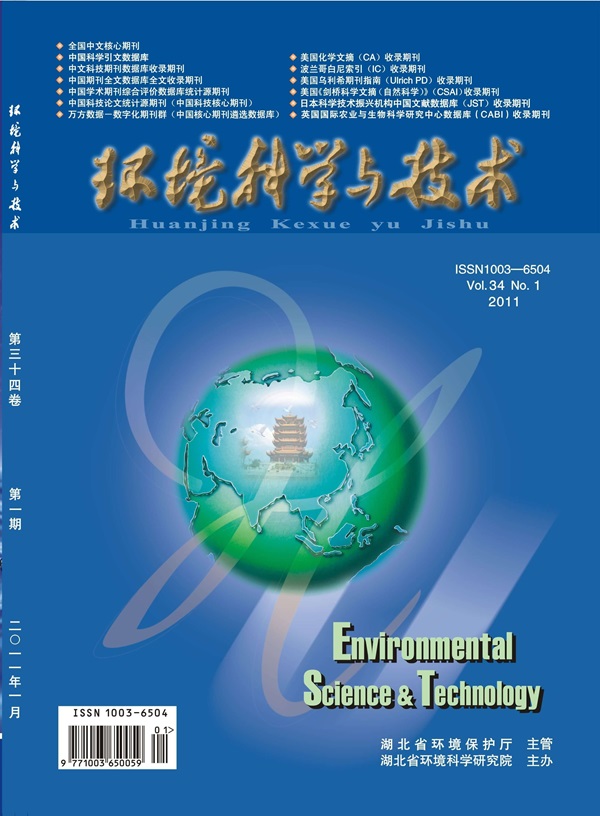Iron Nanoparticles-Confined Graphene Oxide Membranes Coupled with Sulfite-Based Advanced Reduction Processes for Highly Efficient and Stable Removal of Bromate
IF 10.8
1区 环境科学与生态学
Q1 ENGINEERING, ENVIRONMENTAL
引用次数: 0
Abstract
Advanced reduction processes (ARPs) are promising for pollutant removal in drinking water treatment. In this study, we demonstrated highly efficient reduction of bromate, a harmful disinfection byproduct, by coupling ARPs with an iron nanoparticles-intercalated graphene oxide (GO@FeNPs) catalytic membrane. In the presence of 1.0 mM sulfite (S(IV)), the GO@FeNPs membrane/S(IV) system achieved nearly complete removal of 80 μg/L bromate in 3 min. The first-order reaction rate constant for bromate removal in this system was 420 ± 42 min–1, up to 5 orders of magnitude faster than previously reported ARPs. The GO@FeNPs catalytic membrane may offer potential advantages of nanoconfinement and facilitated electron shuttling in addition to the high surface area of the fine FeNPs, leading to the remarkable ARP performance. The GO@FeNPs membrane showed excellent stability, maintaining >97.0% bromate removal over 20 cycles of repeated runs. The membrane can also be applied for fast catalytic reduction of other oxyanions, showing >98.0% removal of nitrate and chlorate. This work may present a viable option for utilizing high-performance reductive catalytic membranes for water decontamination.

铁纳米颗粒与氧化石墨烯膜以及基于亚硫酸盐的高级还原工艺用于高效稳定地去除溴酸盐
高级还原过程(ARPs)在饮用水处理中去除污染物方面大有可为。在这项研究中,我们通过将 ARPs 与铁纳米颗粒夹杂氧化石墨烯(GO@FeNPs)催化膜耦合,证明了溴酸盐(一种有害的消毒副产物)的高效还原。在 1.0 mM 亚硫酸盐(S(IV))存在的情况下,GO@FeNPs 膜/S(IV) 系统在 3 分钟内几乎完全去除 80 μg/L 溴酸盐。该系统去除溴酸盐的一阶反应速率常数为 420 ± 42 min-1,比之前报道的 ARP 快 5 个数量级。GO@FeNPs 催化膜除了具有细小 FeNPs 的高比表面积外,还具有纳米纤化和促进电子穿梭的潜在优势,因而具有显著的 ARP 性能。GO@FeNPs 膜表现出卓越的稳定性,在 20 个循环的重复运行中,溴酸盐去除率保持在 97.0%。该膜还可用于其他氧阴离子的快速催化还原,对硝酸盐和氯酸盐的去除率高达 98.0%。这项研究为利用高性能还原催化膜净化水提供了一种可行的选择。
本文章由计算机程序翻译,如有差异,请以英文原文为准。
求助全文
约1分钟内获得全文
求助全文
来源期刊

环境科学与技术
环境科学-工程:环境
CiteScore
17.50
自引率
9.60%
发文量
12359
审稿时长
2.8 months
期刊介绍:
Environmental Science & Technology (ES&T) is a co-sponsored academic and technical magazine by the Hubei Provincial Environmental Protection Bureau and the Hubei Provincial Academy of Environmental Sciences.
Environmental Science & Technology (ES&T) holds the status of Chinese core journals, scientific papers source journals of China, Chinese Science Citation Database source journals, and Chinese Academic Journal Comprehensive Evaluation Database source journals. This publication focuses on the academic field of environmental protection, featuring articles related to environmental protection and technical advancements.
文献相关原料
公司名称
产品信息
阿拉丁
5,5-Dimethyl-1-pyrrolidine-N-oxide
 求助内容:
求助内容: 应助结果提醒方式:
应助结果提醒方式:


